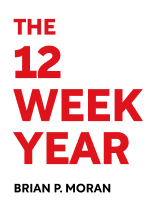

This article is an excerpt from the Shortform book guide to "The 12 Week Year" by Brian P. Moran. Shortform has the world's best summaries and analyses of books you should be reading.
Like this article? Sign up for a free trial here .
Why is it important to define your life vision? How can a simple act of visualizing your dream life help you make it a reality?
One of the most important prerequisites to living the life of your dreams is to have a clear vision of what this life looks like in the first place. When you define your life a vision in concrete terms, you’ll know exactly what to do to get to where you want to be, and your actions will align accordingly.
Here is how to create a compelling life vision and start making your dream life a reality.
What Is a Compelling Life Vision?
Your compelling vision should be of a life significantly better than your current life. Otherwise, why put in all the work if you just want to stay in the same place. Imagine a future where you have everything you want. Think about your life goals. When you consider your goals, you can get a better idea of what you want the rest of your life to look like, which helps you create a plan.
The Brain and Your Emotions
A compelling vision not only helps create passion for your life and work but also changes the physiology of your brain. When you start to work toward something greater than your current state, part of your brain called the amygdala activates and sends fear signals through your body. The amygdala is meant to protect you from dangers in your environment, and moving into uncomfortable territory is perceived as a danger. You will experience fear, confusion, and doubt and be triggered to abandon your efforts.
But there’s another part of the brain that activates when you create a compelling vision. This part is called the prefrontal cortex, and it counterbalances the fear with passion. The prefrontal cortex lights up when you dream about the possibilities in the world, and this activation sends signals to your neurons to form new pathways for behavior. Scientists call this process of building new behavior pathways neuroplasticity. The more you think about your amazing future, the stronger the connections become until they are fully functioning new pathways of beliefs.
Those strengthened beliefs create strengthened actions. Therefore, you can reduce the effects of fear and doubt by continuing to develop your compelling vision and become passionate about achieving it.
Four Stages of Life Vision Creation
Enjoy yourself when you decide to form a compelling vision. This part of the process is benign by nature. You haven’t committed to any actions yet, and you haven’t wagered any of your comfort at this point. You are merely dreaming, and you shouldn’t be afraid to dream big. Envision a future you feel passionate about and that encompasses your deepest aspirations. You can’t achieve greatness if you can’t envision magnificent things. If your vision isn’t big enough to make you uncomfortable, you’re not pushing your desires to the edge.
If your life vision is significant enough, you will experience four different beliefs regarding it as you formulate your plan to achieve it: impossible, possible, probable, and given.
An Impossible Dream
When you envision something beyond your wildest dreams for your future, you’ll believe that attaining it is impossible. You’ll say, “How in the world could I ever make that happen?” This is the wrong question at this point in the process. The correct question is, “What would my life look like if this vision actually came true?”
The reason it’s important not to worry about the how at this point is that there’s no possible way for you to know. If you knew how to make it happen, you would have by now. And when you realize you don’t know the how, you’ll start to adjust your vision to something smaller and seemingly more accessible, which will hinder your ability to grow exponentially. Henry Ford said something to the effect of whether you think you can or you can’t, you’re right. If you believe your goal is unattainable, it will be. So release the restrictions on your imagination and ask, “What if?” This will help you move to the next stage of possible.
A Possible Dream
You shift the thought patterns in your mind when you start to wonder what your life would be like if you accomplished your goals. As you envision the benefits of this new life spiritually, emotionally, professionally, and financially, the vision becomes more real and your desire deepens. All it takes is a tiny shred of belief to make your dream feel possible, and when you’re comfortable with the possibility of achieving your vision, you begin to believe it’s probable.
A Probable Dream
The moment you believe your vision is no longer a pipe dream but something that could very well be achieved is the right moment to ask, “How?” The question of how to make your dream a reality is the motivation that jump-starts the planning process. And once you start to plan, you begin to truly believe, which takes you to the last stage.
A Given Reality
You don’t doubt whether you’ll achieve your vision of your future. You now believe fully that you will because you’ve gone through the steps of determining how to reach it. This powerful mindset places you squarely in your future, and the rest of your life falls in line with that belief.
How to Craft a Compelling Life Vision
Separate your vision into three different levels: long-term goals, short-term goals, and immediate goals. This last level represents the goals and processes of the 12-week plan, which will be explained in a later chapter. The first two levels are designed to keep your motivation for change moving forward and provide the information you need to develop a strong 12-week plan.
- Long-term goals are the lofty ideas you have about your life once you’ve accomplished all the steps to attain your desired end result. Form this vision by taking a few minutes to write down what’s important to your physical, mental, spiritual, relational, financial, professional, and personal arenas of life. What legacy do you want to leave? What lifestyle do you want to live? What experiences do you want your family to have? Who do you want to be? How much do you want to make? Choose the items that resonate the most, and form a vision from them.
- Short-term goals are those you want to achieve over the next three years. Based on your long-term vision, what aspects of the process are most attainable first. Be specific so you will know how to shape your 12-week plan.
Many people believe that simply having a compelling life vision is enough. They sit back and wait for the universe to provide what they need to succeed. But the universe only responds to what you do, not what you dream about. You must act to achieve your full potential.
A compelling life vision requires a compelling plan of action. You can’t navigate a new life if you don’t know which path to take to get there. Planning has three advantages that help you stay on track to reach your short- and long-term goals. You can work out all the mishaps you might face along the way when you take the time to plan on paper before you start to act. And as you reduce your mistakes, you save precious energy and time because you won’t waste either backtracking to fix errors made during a typical trial and error period. If you start to plan and end up somewhere you don’t want to be, you can readjust your plan without risking wasted capital.

———End of Preview———
Like what you just read? Read the rest of the world's best book summary and analysis of Brian P. Moran's "The 12 Week Year" at Shortform .
Here's what you'll find in our full The 12 Week Year summary :
- How to create a structured plan to rapidly accomplish goals
- Why annual goals don't work
- How to create urgency by working in 12-week increments






